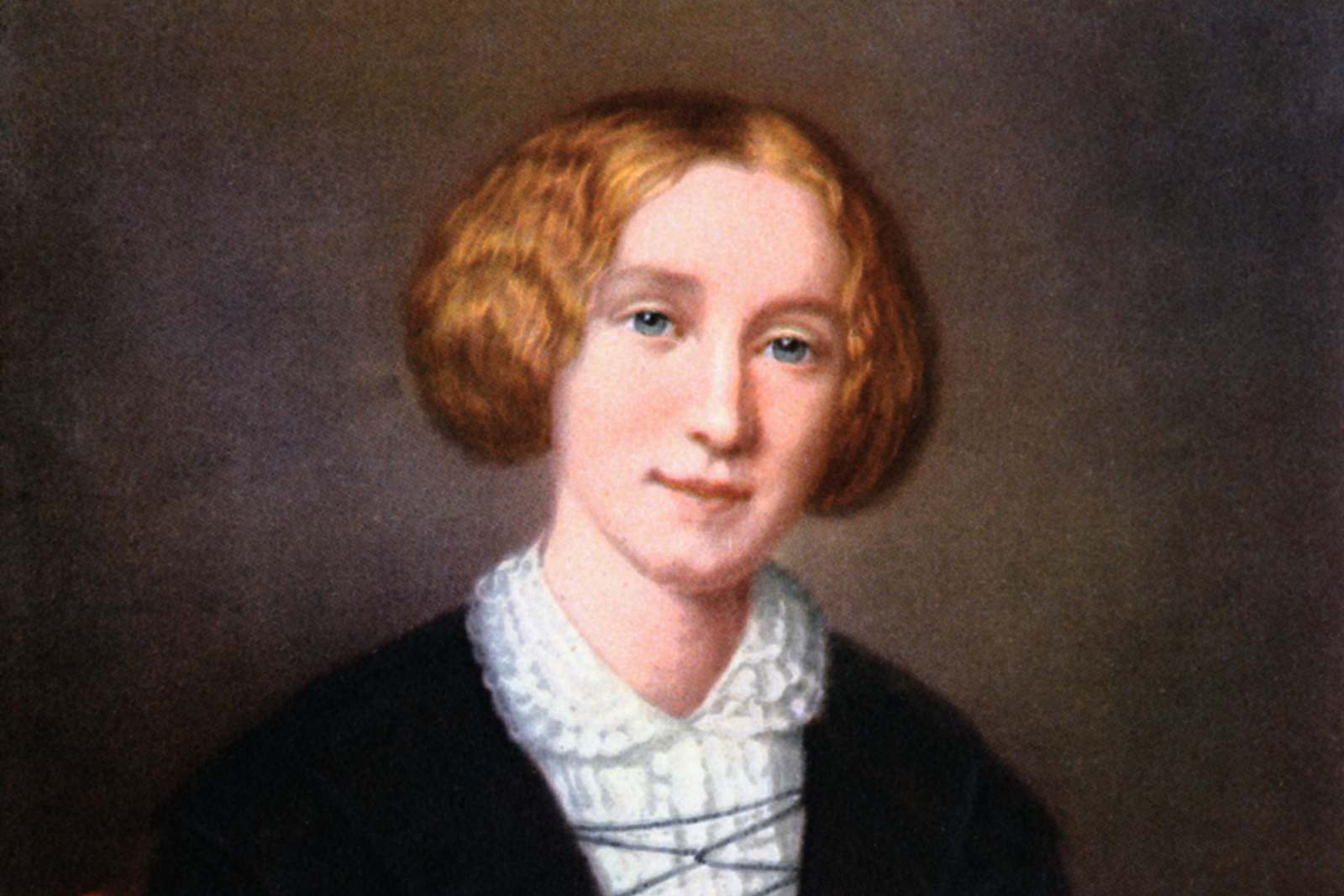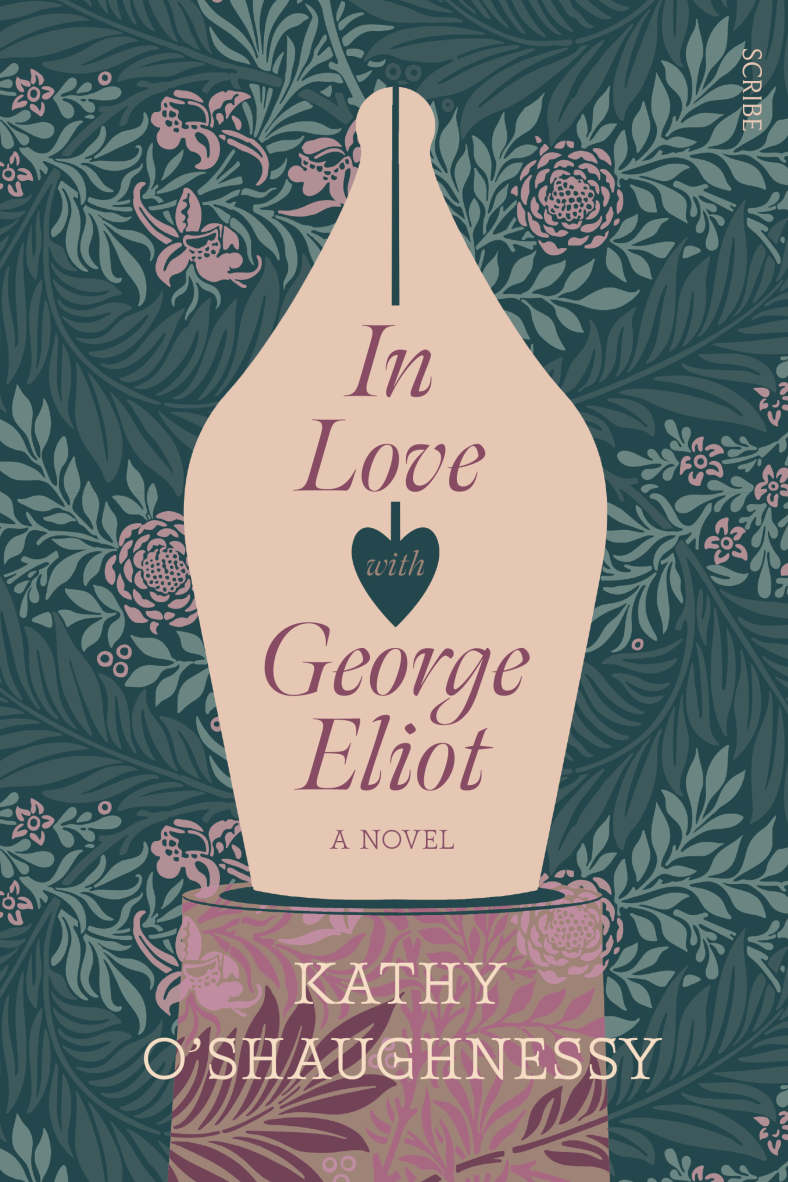What happens when a great novelist becomes a character in a novel?
by Helen ElliottFiction
In Love With George Eliot by Kathy O'Shaughnessy, Scribe, $32.99
In love with George Eliot? Are you? I am. Along with much of the reading world. How could anyone not be in love with the writer, the woman, who created Maggie Tulliver, Adam Bede, Dorothea Brooke, Tertius Lydgate and Gwendolen Harleth? That I first came across all these characters – how rude calling them characters – over half a century ago and that they are so ingrained in my imagination that I didn't have to turn to Wikipedia to check any of them, tells much about Eliot. Eliot's genius, like her contemporary Dickens, is unchallenged.

Kathy O'Shaughnessy is a literary critic and editor for some distinguished British publications. She has published short stories but this is her first novel. It is very, very good. She is also in love with her subject.
George Eliot was born Mary Ann Evans in Warwickshire in 1819. She died just after her 61st birthday but lived with an intensity matching the times. One of the many beauties of O'Shaughnessy's novel is her empathy with the Victorians, especially their beautiful assumption that they could understand and then improve the world.

Mary Ann – Marian – was a precocious child in a narrowly religious family. Women had no access to universities but she had an excellent education, learned Greek and Latin and was fluent in German. She read philosophy for pleasure. Maggie Tulliver is an idealised portrait of Marian but unlike Maggie, Marian didn't drown. She moved to London to start life among the powerful and famous who had been reading her brilliant reviews and her translations of German philosophers.
O'Shaughnessy opens with Marian's arrival at the London home of John Chapman, the publisher of the radical Westminister Review. She will teach him German and be his assistant, bringing her "remarkable clarity of outlook, and compass" to Chapman's intellectual life. It is through Chapman that Marian meets all the luminaries of the world.
Part of Marian's intensity was her sexuality and her idealisation of romantic love. She understood exactly why Dorothea would marry Casaubon in Middlemarch. Marian fell in love with the married Chapman and probably had an affair. She also fell in love with Herbert Spencer, forgotten now but then considered the great philosopher. Spencer rejected Marian because she was – the word was often used about her – ugly. Yet men, and women, fell in love with her, and how and why they did unfolds with grace and psychological depth in these pages.
George Henry Lewes "was called the ugliest man in London". His nickname was "Ape". Marian didn't like him at first – a habit of hers – but, like everyone who knew him, she was beguiled by his intelligence and merriment. Lewes' wife was having an affair with his best friend, Thornton Hunt, son of the writer Leigh Hunt, and had children with him, but Lewes still supported her.
This was the situation in 1854 when Lewes and Marian, deeply in love, decided to leave England for a honeymoon in Europe. Returning to England they lived openly as a married couple. She called herself Mary Evans Lewes although they never married. It was an immense scandal. Her family disowned her.
It is hard for us to imagine the shock of these two significant people in London society acting as they did. Marian was not yet George Eliot, not yet really famous, the most famous, and richest, writer in the English-speaking world. She owed everything to Lewes. The ugliest man in London was also the kindest, the cleverest, the most good-humoured. Without his daily, often hourly support, the fragile Marian would not have transformed into the genius George Eliot. Enabler sounds cliched but Lewes was. They were that impossible thing, soulmates.
O'Shaughnessy has done a rare and marvellous thing with this novel. She gives a new life to these long dead, overdressed people, writing of them with an attentive and loving eye, forgiving them and understanding. Her take on the central mystery of Eliot's later life – marriage to Johnny Cross, a family friend to both her and Lewes and 20 years her junior, and on Cross' suicide attempt on their Italian honeymoon – is painfully believable.
O'Shaughnessy uses two Eliot scholars vying to write their own versions of her work and life to give comment and structure to her story. It works neatly but I couldn't wait to get back to the main story, to Eliot, Lewes and their daily lives. Perhaps the novel could have a second title: In Love With Lewes? This is going on my best books of the year list.